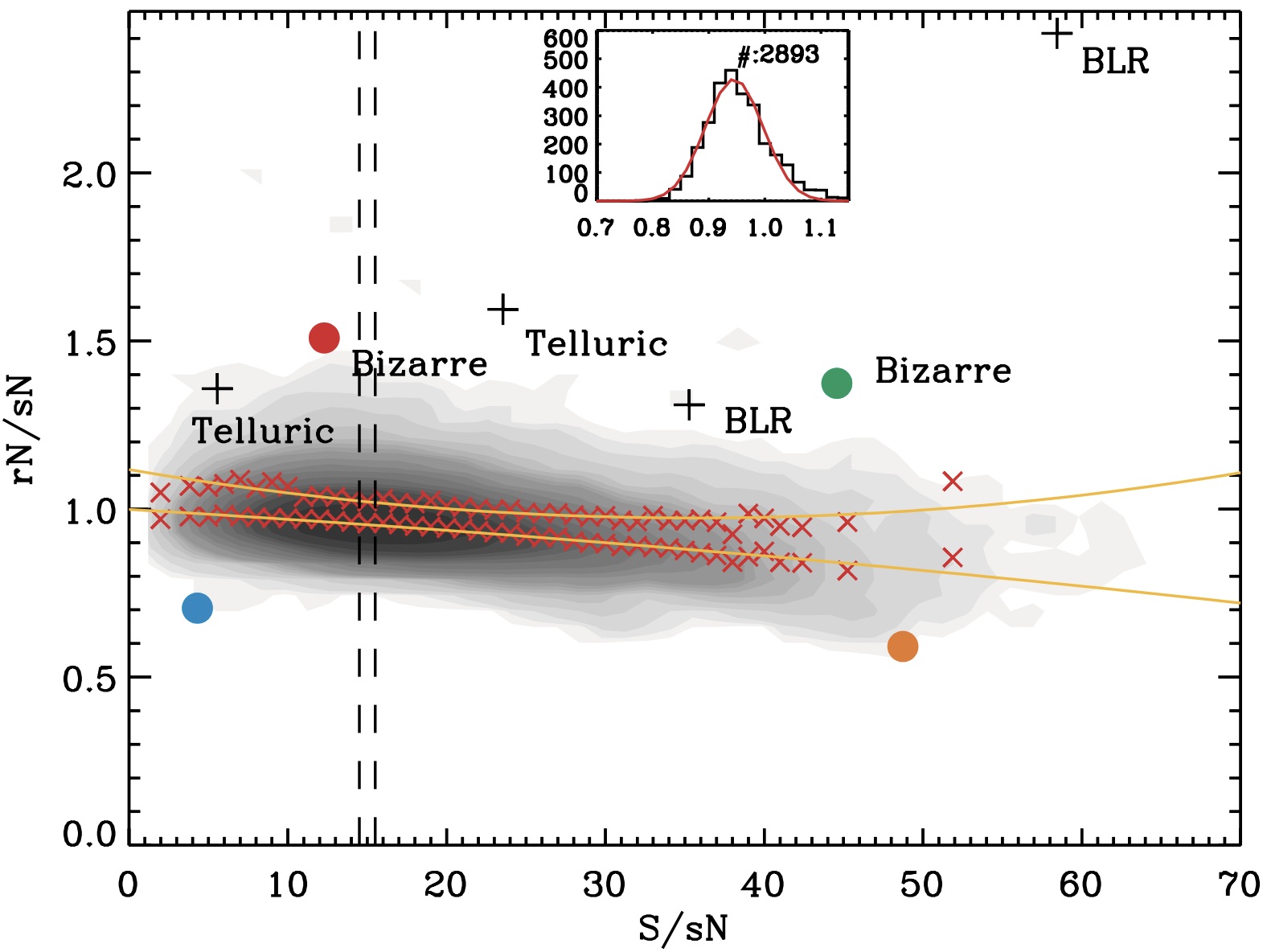OSSY catalog
Improved and Quality-assessed emission and absorption line measurments in Sloan Ditigal Sky Survey galaxies

We present a new database of absorption and emission-line measurements based on the entire spectral atlas from the Sloan Digital Sky Survey (SDSS) 7th data release of galaxies within a redshift of 0.2. Our work makes use of the publicly available penalized pixel-fitting(pPXF) and gas and absorption line fitting (gandalf) IDL codes, aiming to improve the existing measurements for stellar kinematics, the strength of various absorption-line features, and the flux and width of the emissions from different species of ionised gas. Our fit to the stellar continuum uses both standard stellar population models and empirical templates obtained by combining a large number of stellar spectra in order to fit a subsample of high-quality SDSS spectra for quiescent galaxies. Furthermore, our fit to the nebular spectrum includes an exhaustive list of both recombination and forbidden lines. Foreground Galactic extinction is implicitly treated in our models, whereas reddening in the SDSS galaxies is included in the form of a simple dust screen component affecting the entire spectrum that is accompanied by a second reddening component affecting only the ionised gas emission. In order to check for systematic departures, we provide a quality assessment for our fit to the SDSS spectra in our sample. This quality assessment also allows the identification of objects with either problematic data or peculiar features. For example, based on the quality assessment, approximately 1% of the SDSS spectra classified as "galaxies" by the SDSS pipeline do in fact require additional broad lines to be matched, even though they do not show a strong continuum from an active nucleus, as do the SDSS objects classified as "quasars". Finally, we provide new spectral templates for galaxies of different Hubble types, obtained by combining the results of our spectral fit for a subsample of 452 morphologically selected objects.





